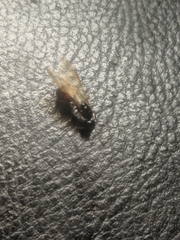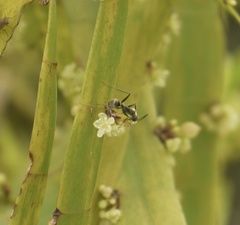©dirtywalt, some rights reserved (CC-BY-NC)
©Raquel Ribeiro, some rights reserved (CC-BY-NC)
©Raquel Ribeiro, some rights reserved (CC-BY-NC)
©fenaa_patel, some rights reserved (CC-BY-NC)
©napasorn_chw, some rights reserved (CC-BY-NC)
©napasorn_chw, some rights reserved (CC-BY-NC)
©napasorn_chw, some rights reserved (CC-BY-NC)
©napasorn_chw, some rights reserved (CC-BY-NC)
©napasorn_chw, some rights reserved (CC-BY-NC)
©Luis Ángel Niño Barreat, some rights reserved (CC-BY-NC)
©simonepdx, some rights reserved (CC-BY-NC)
©simonepdx, some rights reserved (CC-BY-NC)
©simonepdx, some rights reserved (CC-BY-NC)
©Boaz Benaiah Solorio, some rights reserved (CC-BY-NC)
©Cecile Roux, some rights reserved (CC-BY-NC)
©Eduardo Luis Beltrocco, some rights reserved (CC-BY-NC)
©Eduardo Luis Beltrocco, some rights reserved (CC-BY-NC)
©Eduardo Luis Beltrocco, some rights reserved (CC-BY-NC)
©fernando007cruz, some rights reserved (CC-BY-NC)
©sinusoid2050, some rights reserved (CC-BY-NC)
©damnyu, some rights reserved (CC-BY-NC)
©damnyu, some rights reserved (CC-BY-NC)
©damnyu, some rights reserved (CC-BY-NC)
©anthonypaul, some rights reserved (CC-BY-NC)
©Andrew, some rights reserved (CC-BY-NC)
©Raul Rancel Salazar, some rights reserved (CC-BY-NC)
©Raul Rancel Salazar, some rights reserved (CC-BY-NC)
©Raul Rancel Salazar, some rights reserved (CC-BY-NC)
©Raul Rancel Salazar, some rights reserved (CC-BY-NC)
©Dani, some rights reserved (CC-BY-NC)
©Dani, some rights reserved (CC-BY-NC)
©Zeal, some rights reserved (CC-BY-NC)
©Zhao Yishan, some rights reserved (CC-BY-NC)
©Zhao Yishan, some rights reserved (CC-BY-NC)
©Barbara Klenner, some rights reserved (CC-BY-NC)
©Barbara Klenner, some rights reserved (CC-BY-NC)
©Barbara Klenner, some rights reserved (CC-BY-NC)
©Barbara Klenner, some rights reserved (CC-BY-NC)
©Adele Philippides, some rights reserved (CC-BY-SA)
©Adele Philippides, some rights reserved (CC-BY-SA)
©Shantam Ojha, some rights reserved (CC-BY-NC)
©mas1600, some rights reserved (CC-BY-NC)
©Loxley Fedec, some rights reserved (CC-BY-NC)
©Loxley Fedec, some rights reserved (CC-BY-NC)
©Loxley Fedec, some rights reserved (CC-BY-NC)
©Loxley Fedec, some rights reserved (CC-BY-NC)
©gabinus2003, some rights reserved (CC-BY-NC)
©gabinus2003, some rights reserved (CC-BY-NC)
©ksniadach, some rights reserved (CC-BY-NC)
©manassas, some rights reserved (CC-BY-NC)
©manassas, some rights reserved (CC-BY-NC)
©sierrawildflower, some rights reserved (CC-BY-NC)
©portioid, some rights reserved (CC-BY-SA)
©portioid, some rights reserved (CC-BY-SA)
©portioid, some rights reserved (CC-BY-SA)
©rogstanden, some rights reserved (CC-BY-NC)
©rogstanden, some rights reserved (CC-BY-NC)
©Walk A Long, some rights reserved (CC-BY-NC)
©mrc_scicence_society_12b3_2022, some rights reserved (CC-BY-NC)
©Reiner Richter, some rights reserved (CC-BY-NC-SA)
©Reiner Richter, some rights reserved (CC-BY-NC-SA)
©cordialdreams, some rights reserved (CC-BY-NC)
©cordialdreams, some rights reserved (CC-BY-NC)
©Arturo Santos, some rights reserved (CC-BY)
©AGNALDO CORREA DE ASSIS, some rights reserved (CC-BY-NC)
©ianrainbow, some rights reserved (CC-BY-NC)
©SeeTurtle, some rights reserved (CC-BY)
©SeeTurtle, some rights reserved (CC-BY)
©SeeTurtle, some rights reserved (CC-BY)
©SeeTurtle, some rights reserved (CC-BY)
©Keith Martin-Smith, some rights reserved (CC-BY-NC)
©Greg Bellion, some rights reserved (CC-BY-NC)
©Joshua, some rights reserved (CC0)
©Greg Bellion, some rights reserved (CC-BY-NC)
©Greg Bellion, some rights reserved (CC-BY-NC)
©Greg Bellion, some rights reserved (CC-BY-NC)
©Greg Bellion, some rights reserved (CC-BY-NC)
©Greg Bellion, some rights reserved (CC-BY-NC)
©Kelsey Kennedy, some rights reserved (CC-BY-NC)
©Eric Fischer Rempe, some rights reserved (CC-BY-NC)
©Eric Fischer Rempe, some rights reserved (CC-BY-NC)
©Erin Springinotic, some rights reserved (CC0)
©Kelsey Kennedy, some rights reserved (CC-BY-NC)
©Finn McGhee, some rights reserved (CC-BY-NC)
©Huang Wen, some rights reserved (CC-BY-NC)
©andrearaujo_cerradopix, some rights reserved (CC-BY-NC)
©ketzerei, some rights reserved (CC-BY-NC)
©Karim Gharbi, some rights reserved (CC-BY-NC)
©hiouchiman, some rights reserved (CC-BY-NC)
©Peter Li, some rights reserved (CC-BY-NC)
©haydenat, some rights reserved (CC-BY-NC)
©Josy, some rights reserved (CC-BY-NC)
©Josy, some rights reserved (CC-BY-NC)
©Josy, some rights reserved (CC-BY-NC)
©Josy, some rights reserved (CC-BY-NC)
©delbert, some rights reserved (CC-BY-NC)
©delbert, some rights reserved (CC-BY-NC)
©haydenat, some rights reserved (CC-BY-NC)
©Kozue Kawakami, some rights reserved (CC-BY)
©nikenajengpradita, some rights reserved (CC-BY-NC)
©Flávio Mendes, some rights reserved (CC-BY-NC)
©Derrick Wales, some rights reserved (CC-BY)
©pimelea, some rights reserved (CC-BY-NC)
©pimelea, some rights reserved (CC-BY-NC)
©Georgia Born-Schmidt, some rights reserved (CC-BY-NC)
©Georgia Born-Schmidt, some rights reserved (CC-BY-NC)
©Derrick Wales, some rights reserved (CC-BY)
©Derrick Wales, some rights reserved (CC-BY)
©Derrick Wales, some rights reserved (CC-BY)
©Derrick Wales, some rights reserved (CC-BY)
©Derrick Wales, some rights reserved (CC-BY)
©Geoffrey Cox, some rights reserved (CC-BY)
©tladika, some rights reserved (CC-BY-NC)
©tladika, some rights reserved (CC-BY-NC)
©Daniel Kurek, some rights reserved (CC-BY-NC)
©Martin Alfredo Murillo, some rights reserved (CC-BY)
©Martin Alfredo Murillo, some rights reserved (CC-BY)
©Martin Alfredo Murillo, some rights reserved (CC-BY)
©Oliver Komar, some rights reserved (CC-BY-NC)
©Oliver Komar, some rights reserved (CC-BY-NC)
©Oliver Komar, some rights reserved (CC-BY-NC)
©Oliver Komar, some rights reserved (CC-BY-NC)
©Federico Figueroa Cabezas, some rights reserved (CC-BY)
©Federico Figueroa Cabezas, some rights reserved (CC-BY)
©Federico Figueroa Cabezas, some rights reserved (CC-BY)
©Daniel Kurek, some rights reserved (CC-BY-NC)
©Daniel Kurek, some rights reserved (CC-BY-NC)
©Daniel Kurek, some rights reserved (CC-BY-NC)
©lordbyron1, some rights reserved (CC-BY-NC)
©Oliver Komar, some rights reserved (CC-BY-NC)
©Oliver Komar, some rights reserved (CC-BY-NC)
©Matt Campbell, some rights reserved (CC-BY-NC)
©Benjamin Lupton, some rights reserved (CC-BY-NC-SA)
©Connor E. J. Graham, some rights reserved (CC-BY-NC)
©Benjamin Silva Ahumada, some rights reserved (CC-BY-NC)
©domenicaarguello, some rights reserved (CC-BY-NC)
©domenicaarguello, some rights reserved (CC-BY-NC)
©domenicaarguello, some rights reserved (CC-BY-NC)
©Vicente Augustin Vacas, some rights reserved (CC-BY-NC)
©Mattia Menchetti, some rights reserved (CC-BY)
©bryanbutler28, some rights reserved (CC-BY-NC)
©bugguy541, some rights reserved (CC-BY-NC)
©Greg Bellion, some rights reserved (CC-BY-NC)
©Mattia Menchetti, some rights reserved (CC-BY)
©Mattia Menchetti, some rights reserved (CC-BY)
©cynodon, some rights reserved (CC-BY-NC)
©dovet, some rights reserved (CC-BY-NC)
©Paddy Kemner, some rights reserved (CC-BY-NC)
©kaf213, some rights reserved (CC-BY-NC)
©Alejandra Flores, some rights reserved (CC-BY-NC-SA)
©Alejandra Flores, some rights reserved (CC-BY-NC-SA)
©Eric Fischer Rempe, some rights reserved (CC-BY-NC)
©Eric Fischer Rempe, some rights reserved (CC-BY-NC)
©mauricio_moreno, some rights reserved (CC-BY-NC)
©Maria Emília Martins, some rights reserved (CC-BY-NC-SA)
©Maria Emília Martins, some rights reserved (CC-BY-NC-SA)
©Maria Emília Martins, some rights reserved (CC-BY-NC-SA)
©Maria Emília Martins, some rights reserved (CC-BY-NC-SA)
©Eric Fischer Rempe, some rights reserved (CC-BY-NC)
©suzette35, some rights reserved (CC-BY-NC)































































































































































